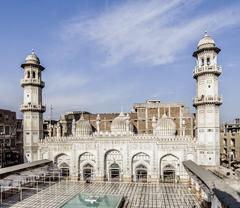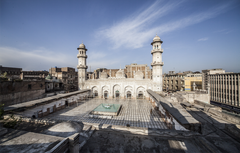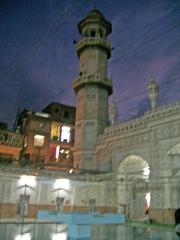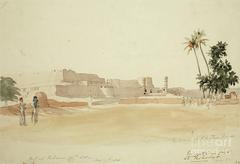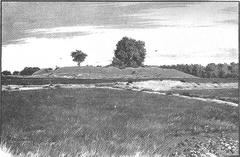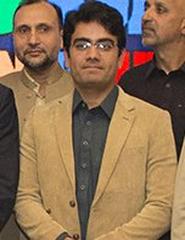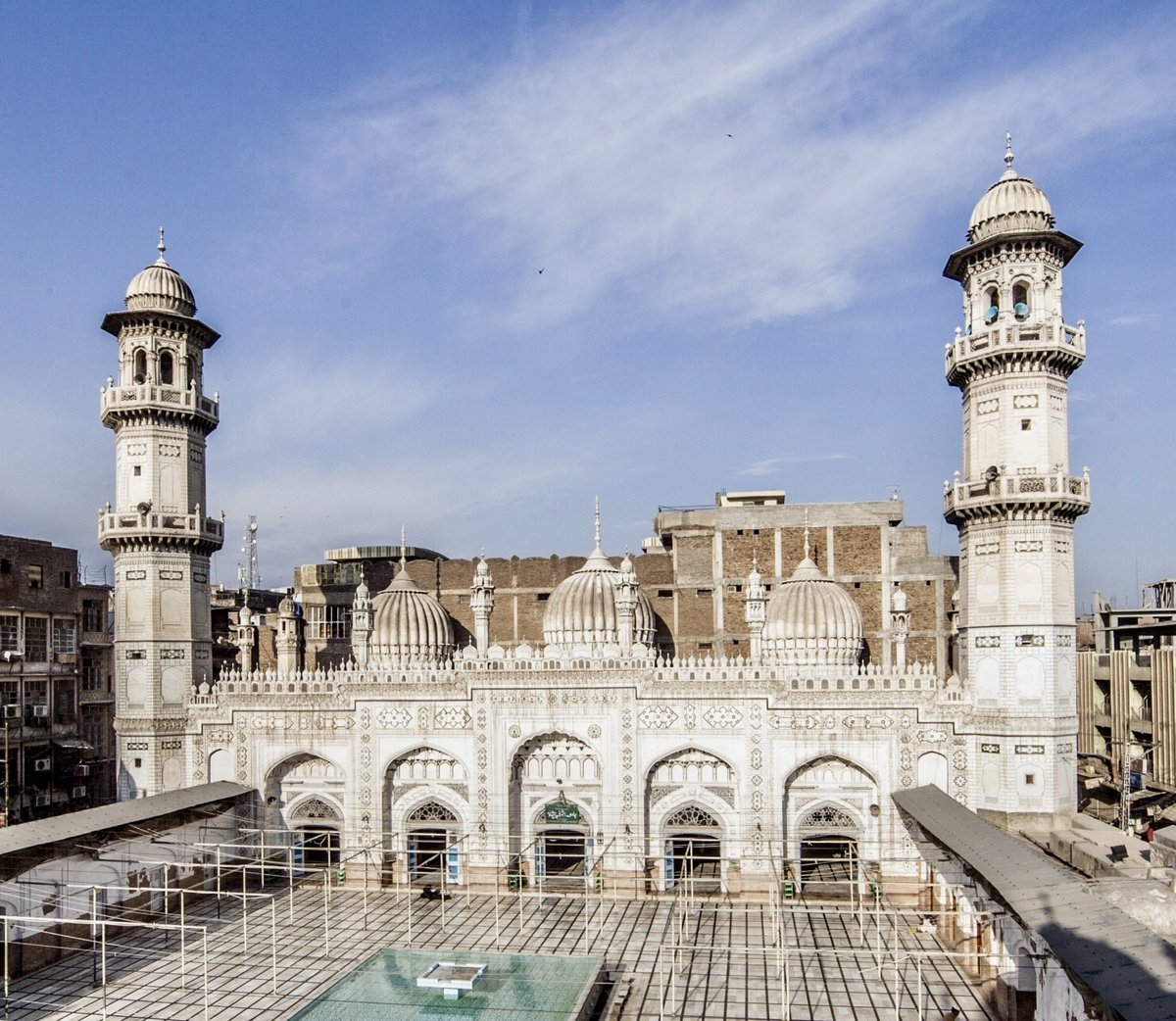
Visiting Mahabat Khan Mosque: History, Tips, and Guide
Date: 18/07/2024
Introduction
Table of Contents
- Introduction
- Historical Background
- Visitor Information
- Architectural Features
- Nearby Attractions
- Conservation Efforts
- FAQ
- Conclusion
Historical Background
The Reign of Mahabat Khan
The mosque owes its name to the Mughal governor of Peshawar, Mahabat Khan bin Ali Muhammad Khan, a prominent figure during Emperor Shah Jahan’s reign (1628-1658). Known for his administrative acumen and military prowess, Mahabat Khan undertook the mosque’s construction in 1630. The mosque served not only as a place of worship but also as a symbol of Mughal authority and influence in the region.
Architectural Influences
The mosque’s architecture reflects a blend of Mughal and regional styles. The main prayer hall, with its three graceful domes, showcases the grandeur typical of Mughal design. Intricate floral motifs and geometric patterns, crafted from marble and stucco, adorn the walls and ceilings, reflecting the Mughal love for elaborate ornamentation. The mosque’s minarets, soaring high above the bustling city, are reminiscent of Timurid architectural traditions, further highlighting the cultural confluence of the era.
A Symbol of Resilience
The Mahabat Khan Mosque has witnessed turbulent times throughout its history. In 1747, during the invasion of the Afghan King Ahmad Shah Durrani, the mosque suffered significant damage. The Sikhs, under the rule of Maharaja Ranjit Singh in the 19th century, further repurposed the mosque, using it as a stable. These events left their mark on the structure, with some sections bearing the scars of conflict and repurposing.
Restoration and Renewal
Following the Sikh rule, the British took control of Peshawar in 1849. Recognizing the mosque’s historical and architectural significance, they undertook restoration efforts to revive its former glory. The mosque’s courtyard, once used as a marketplace, was cleared and restored to its original purpose. These efforts breathed new life into the mosque, allowing it to reclaim its place as a center of religious and cultural life in Peshawar.
Visitor Information
Visiting Hours
The Mahabat Khan Mosque is open to visitors from 9:00 AM to 5:00 PM daily. It is advisable to visit during the early morning or late afternoon to avoid the midday heat.
Tickets
Entry to the Mahabat Khan Mosque is free of charge. However, donations for the upkeep of the mosque are welcome and appreciated.
Dress Code
Visitors are advised to dress modestly, covering shoulders and knees, as a sign of respect for the religious site. Women should cover their heads, and everyone should remove their shoes before entering the prayer halls.
Photography
Photography is allowed, but be mindful of worshippers and avoid using flash. Always ask for permission before taking photos of individuals.
Guided Tours
Local guides are available for hire and can provide in-depth information about the mosque’s history and architecture. It is recommended to book these in advance.
Donations
While not expected, donations are welcome and contribute towards the maintenance and upkeep of the mosque. There is usually a donation box located within the mosque complex.
Respectful Behavior
Remember that the Mahabat Khan Mosque is an active place of worship. Visitors are expected to be respectful of the sanctity of the space and those praying. Maintain silence or speak in hushed tones, avoid any disruptive behavior, refrain from eating, drinking, or smoking within the mosque complex, and be mindful of your language and gestures.
Accessibility
The mosque has a large courtyard and wide entrances, making it relatively accessible for visitors with mobility issues. However, there may be some areas with steps or uneven surfaces. It’s best to inquire about accessibility beforehand if you have specific requirements.
Architectural Features
Layout and Structure
The mosque follows the traditional Mughal four-iwan plan, centered around a spacious courtyard. The courtyard, paved with marble, features a large ablution pool (hauz) for ritual cleansing. Surrounding the courtyard are arched alcoves (iwans) leading to various prayer halls and chambers. The main prayer hall, located on the western side, faces Mecca and boasts the most elaborate decorations.
The Majestic Entrance
The mosque’s main entrance, an imposing structure in itself, is a testament to Mughal architectural prowess. The gateway, adorned with intricate calligraphy and floral motifs, leads into a vaulted vestibule. This vestibule further opens into the expansive courtyard, creating a sense of awe and grandeur.
Minarets
Two towering minarets, flanking the main entrance, punctuate the Peshawar skyline. These minarets, reaching a height of 30 meters, are adorned with intricate geometric patterns and calligraphy bands. While originally used for the call to prayer, today, they serve as a reminder of the mosque’s historical significance and architectural splendor.
The Main Prayer Hall
The main prayer hall, the heart of the mosque, is an architectural marvel. The hall, supported by massive columns, features three exquisitely crafted domes. The central dome, larger than the flanking ones, rises above the rest, emphasizing the mosque’s grandeur.
The Mihrab
Within the main prayer hall, the mihrab, a semicircular niche carved into the western wall, indicates the direction of Mecca. This sacred niche, adorned with intricate calligraphy and floral designs, serves as a focal point for prayer. The calligraphy, primarily verses from the Quran, adds to the mosque’s spiritual ambiance.
Decorative Elements
The Mahabat Khan Mosque is renowned for its breathtaking decorative elements. Intricate calligraphy, a hallmark of Islamic art, adorns the mosque’s walls, domes, and minarets. The calligraphy, executed in various styles, includes verses from the Quran, Islamic invocations, and historical inscriptions.
Floral Motifs
Complementing the calligraphy are intricate floral motifs, another characteristic feature of Mughal art. These motifs, carved into marble and stucco, depict a variety of flowers, including lilies, tulips, and roses. The floral designs, symbolizing paradise and spiritual growth, add a touch of elegance and serenity to the mosque’s ambiance.
Geometric Patterns
Geometric patterns, a fundamental element of Islamic art, are interwoven with the calligraphy and floral motifs. These patterns, based on complex mathematical principles, create a sense of harmony and balance. The use of geometric patterns reflects the Islamic belief in the underlying order and unity of the universe.
The Use of Light and Shadow
The mosque’s architects masterfully utilized light and shadow to enhance its architectural beauty. The placement of domes, arches, and screens creates a play of light and shadow throughout the day, highlighting the intricate details and creating a sense of depth and dimension.
Nearby Attractions
Peshawar Museum
A short distance from the mosque, this museum houses an impressive collection of Gandharan art and artifacts.
Bala Hisar Fort
A historic fort offering panoramic views of Peshawar and a glimpse into the region’s military history.
Qissa Khwani Bazaar
Known as the ‘Storytellers’ Bazaar,’ this vibrant market is perfect for experiencing local culture and cuisine.
Sethi House Museum
A beautifully preserved 19th-century mansion showcasing traditional Peshawari architecture.
Conservation Efforts
Over the centuries, the Mahabat Khan Mosque has undergone several renovations and conservation efforts to preserve its architectural splendor. The mosque stands as a testament to the enduring legacy of Mughal architecture and serves as a vital center for the Muslim community in Peshawar.
Conclusion
FAQ
Q: What are the visiting hours for Mahabat Khan Mosque? A: The mosque is generally open from 9:00 AM to 5:00 PM daily.
Q: Is there an entry fee for the Mahabat Khan Mosque? A: Entry is free, but donations are welcomed.
Q: Are there guided tours available? A: Yes, guided tours are available and can be booked in advance.
Q: What should I wear when visiting the mosque? A: Dress modestly, with women covering their heads and everyone removing their shoes before entering the prayer halls.
Q: What are some nearby attractions to visit? A: Nearby attractions include the Peshawar Museum, Bala Hisar Fort, and Sethi House Museum.
